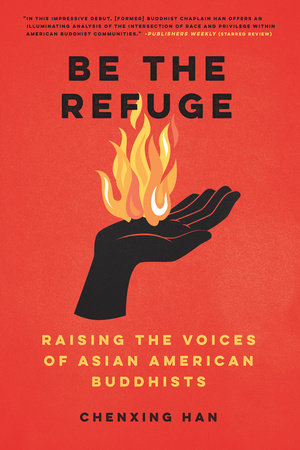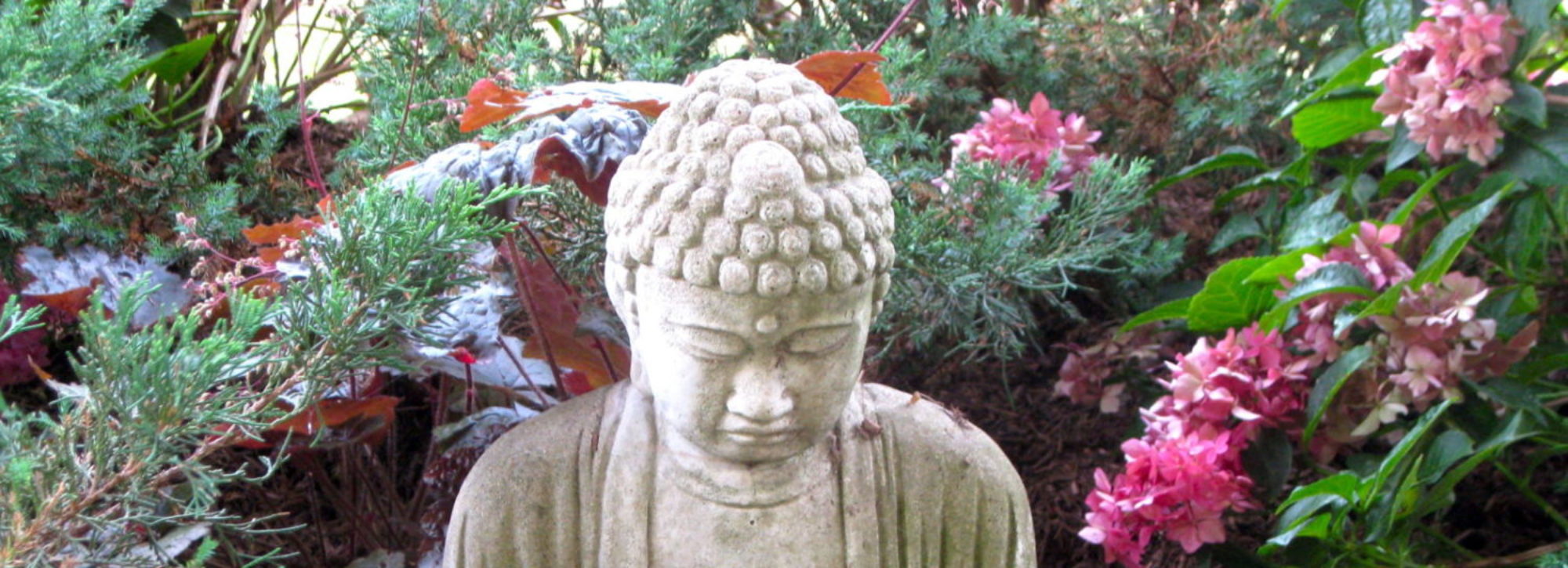 It’s become commonplace to talk carelessly about two American Buddhisms (a phrase attributed to famed Buddhologist Charles Prebish), one often described as ”convert” or ”white” Buddhism, and the other as ”heritage,” ”birthright,” ”immigrant” or ”Asian American” Buddhism. According to this simplistic dichotomy, ”convert” Buddhists are mostly older, well-off, European-descent Buddhists who grew up in non-Buddhist households. ”Heritage” Buddhists, on the other hand, are Asian Americans raised within Buddhist households. According to this dichotomy, convert Buddhists practice meditation and study Buddhist philosophy, whereas heritage Buddhists make offerings and burn incense for the Buddha and their ancestors, and engage in rituals and chanting. Heritage sanghas also serve important social and community functions for immigrant families whose English may be a second language, and participation within them is often a family affair, in ways that convert participation often is not. Convert Buddhism all-too-often smugly assumes its Buddhism is ”authentic” Buddhism, whereas heritage Buddhists are mired in superstitious practices reflecting their ethnic culture of origin rather than the Buddha’s suttas and sutras.
It’s become commonplace to talk carelessly about two American Buddhisms (a phrase attributed to famed Buddhologist Charles Prebish), one often described as ”convert” or ”white” Buddhism, and the other as ”heritage,” ”birthright,” ”immigrant” or ”Asian American” Buddhism. According to this simplistic dichotomy, ”convert” Buddhists are mostly older, well-off, European-descent Buddhists who grew up in non-Buddhist households. ”Heritage” Buddhists, on the other hand, are Asian Americans raised within Buddhist households. According to this dichotomy, convert Buddhists practice meditation and study Buddhist philosophy, whereas heritage Buddhists make offerings and burn incense for the Buddha and their ancestors, and engage in rituals and chanting. Heritage sanghas also serve important social and community functions for immigrant families whose English may be a second language, and participation within them is often a family affair, in ways that convert participation often is not. Convert Buddhism all-too-often smugly assumes its Buddhism is ”authentic” Buddhism, whereas heritage Buddhists are mired in superstitious practices reflecting their ethnic culture of origin rather than the Buddha’s suttas and sutras.
In her illuminating new book, Be the Refuge: Raising the Voices of Asian American Buddhists (North Atlantic Books, 2021), author Chenxing Han introduces us to all the nuances and complexities of being a young Asian American Buddhist in America today, and shows how inadequate, misleading, and harmful the simplistic dichotomy of two American Buddhisms can be. Han bases her book on her own personal journey as well as 89 extensive interviews she conducted with a diverse group of young Asian American Buddhists about their Buddhist identity and experiences as part of fulfilling the requirements for her master’s thesis at the Institute of Buddhist Studies.
The complexities of the young Asian American Buddhist experience can be mind-boggling. While the so-called ”convert” Buddhist communities are often overwhelmingly white, they also have Asian American members who may be converts (having grown up in Christian, Jewish, Muslim, Hindu, or atheist families), or who may be practicing a different school of Buddhism than the one they were raised in. They also may include a smaller number of non-convert European-descent white Buddhists who were raised within Buddhist or mixed-religion families. In the same way, many so-called ”heritage” Buddhist sanghas also have white convert members who participate in their congregations. In addition, there are many Asian Americans who grew up in mixed-race, mixed-ethnicity, and/or mixed-religion households (or married into them) that defy and transcend any of these categories.
Chenxing Han shows that many young Asian American Buddhists find themselves in an ambiguous and uncomfortable situation. Their parents may have engaged in Buddhist religious practices without explaining their meaning, or conducted them in a language their children did not understand. Second- and third-generation Asian Americans can be in the ambivalent position of both devaluing their parents’ ways as ”old world” and ”superstitious,” while simultaneously experiencing a nostalgia for it, and a wish not to break the thread of family tradition. Even when trying to follow family tradition, they can be riddled with uncertainty and anxiety over possibly not carrying on these only partially-transmitted traditions in exactly the correct way.
Another complication is that many heritage Buddhist sanghas may be comprised of mostly ”Sunday school” children and their parents and grandparents, with a dearth of young adults in their 20s and 30s. These sanghas often conduct their services in languages second-, third-, and later generation immigrants can no longer speak or understand. This creates barriers that discourage young adult Asian Americans from affiliating with these sanghas, but the all-or-mostly white convert sanghas also don’t feel particularly welcoming. Asian American visitors to all-white sanghas almost inevitably have to deal with the prejudices and mistaken assumptions white sangha members make about them. It is often assumed, for example, that Buddhism is their family of origin religion, or white members will ask ”where they are from.” In addition, convert Buddhist publications rarely feature Asian American teachers, and often erase the long presence of Asian American Buddhism in America, as if American Buddhism was the solely the product of white pioneers (and their Asian teachers) who created the first mostly white convert sanghas.
There can also be strong pressure on Asian Americans to ”become more American,” to blend in, and to not attract attention by being different. Their Asian physical features already mark them as different, and being a ”Buddhist” becomes just another way they do not fit in with their white American peers at school and at work. Dropping a Buddhist identification and becoming Christian is one way to fit in better. In addition, many Asian American immigrant communities came to America as already predominantly Christian communities, including many Korean, Vietnamese, and Filipino communities. Within those communities, becoming a convert Buddhist carries none of the social cachet that Buddhism carries for many white European-descent converts who come from communities where their peers might consider Buddhism to be ”cool” and ”evolved.”
Chenxing Han also addresses the interesting question of what it means to be a ”convert” Buddhist in the first place, as ”conversion” is not really a Buddhist thing. She suggests that ”becoming a Buddhist” is a little like steeping a cup of tea. How long does the hot water have to steep before it is ”officially” tea? Becoming ”Buddhist” is much the same. It can be a gradual process over a long period of time, and is often not an all-on-none affair, as many American Buddhist practitioners, white and Asian American, end up with hybrid identities.
Since many heritage Buddhist Sanghas originated to meet the needs of ethnic immigrant communities, there are ways that they continue to serve the unique and specific needs of Japanese, Chinese, Taiwanese, Vietnamese, Korean, Filipino, Tibetan, Nepalese, Cambodian, Lao, Thai, Burmese, Sinhalese, and other Asian immigrant communities. Pan-Asian American sanghas, to the extent they exist, are rare. Convert Buddhist sanghas, on the other hand, tend to be mostly English-language sanghas that serve the needs of acculturated (all-too-often meaning ”white”) Americans in general, and do not cater to the needs of any specific ethnic group. As heritage sanghas age without newer immigrants arriving in great numbers, there is a tendency for these sanghas to dwindle in membership. Heritage sanghas may feel an urgent need to cater more to second-, third-, fourth-, fifth-, and sixth-generation Asian Americans whose needs are quite different from the original communities they were designed to serve. There is also pressure on these sanghas to reach out to members of other ethnicities, to become more inclusive and universalistic, and to offer more of their services in English. Something is lost and gained in the process, and it’s not uncommon for younger members of these communities to feel ambivalent about these changes.
It is remarkable fact that while Asian Americans make up two-thirds of the U.S. Buddhist population, it is hard for many white American Buddhists (and even Asian American Buddhists) to name even a single major Asian American Buddhist religious figure. In fact, it may even be easier for white American Buddhists to name prominent African American Buddhist figures than it is for them to name prominent Asian American Buddhist ones. It is hard to account for this almost complete erasure of the Asian American Buddhist community in the minds of many or most convert white Buddhists without thinking in terms of white privilege and unconscious racism. When Asian American Buddhists angrily protest their erasure by ”mainstream” Buddhist publications, their complaints have often been met with incomprehension, dismissiveness, anger, and defensiveness. Ann Gleig has recently been pointing out there are white, cis-gender, male, right-wing on-line Buddhist communities that are unsympathetic, if not hostile, to the distress of excluded, marginalized, or demeaned communities. Sometimes, it seems, the racism isn’t unconscious at all, but outright and in-one’s-face.
Chenxing Han writes that her manuscript was declined by mainstream Buddhist publishing houses, as well as by academic presses. We should be grateful that North Atlantic Books, an independent, non-profit press, recognized its value and became the venue for its publication. We should also be grateful that Chenxing Han chose to not write the kind of book that would appeal to academic presses. Her book is readily accessible to all readers, and her writing is personal, intimate, and urgent. Her informants are not just research subjects, but often become personal friends, and important figures in her own growth. She owes a great debt, for example, to Aaron Lee, AKA, ”arunlikati,” the creator of the Angry Asian Buddhist blog. Aaron’s life, writing, friendship, support, and untimely death play a major role in Han’s own personal journey, growth, and development. We get to know him as she did, and her writing is a living testament and tribute to his contributions to the Buddhist community.
As a side note, the stories told by Chenxing Han’s Asian American informants resonated with my own very different story. I clearly fit neatly into the traditional convert Buddhist category. I am an older, white, Ashkenazi Jew, and wasn’t born into a Buddhist family. Nevertheless, my paternal grandparents and maternal great-grandparents were immigrants. They knew what it was like to face discrimination for being immigrants and for being Jewish. They often spoke with their siblings in Yiddish, a language I only understood in bits and pieces. While my maternal grandparents lit shabbat candles, went to temple, and kept kosher—my father was a closet atheist, and after my mother passed, maintained none of the Jewish traditions. I could look back at my grandparents’ religion with nostalgia, but couldn’t make it my own. My parents looked at orthodox Jewish religion as mostly bubbe-meises—old wives tales and superstitions. When I found my way to Buddhism midway through life, it was largely through teachers from Jewish and half-Jewish ancestry—teachers like Joseph Goldstein, Sharon Salzberg, Larry Rosenberg, Sylvia Boorstein, and Toni Packer. Their backgrounds made it feel safe for me to wander onto what might have otherwise felt like alien territory. I wonder if I would have ever discovered Buddhism if it hadn’t been through teachers I could identify with because they were in some way ”like me.” Representation, in fact, matters. In this way, I can identify with the different but parallel struggles of Asian American Buddhists to become American and ”modern” without losing their identities and breaking with family traditions, and to find places of belonging in communities with at least some members who look like themselves and understand their journeys.
Be the Refuge reveals the hidden stories of young Asian American Buddhists, allowing them to tell their stories in their own voices. It makes a major contribution to the long-term project of undermining the mythology of two Buddhisms, leading the way to a pluralistic and inclusive American Buddhism that respects the diversity of our ways of practice while also recognizing their fundamental underlying commonality.
